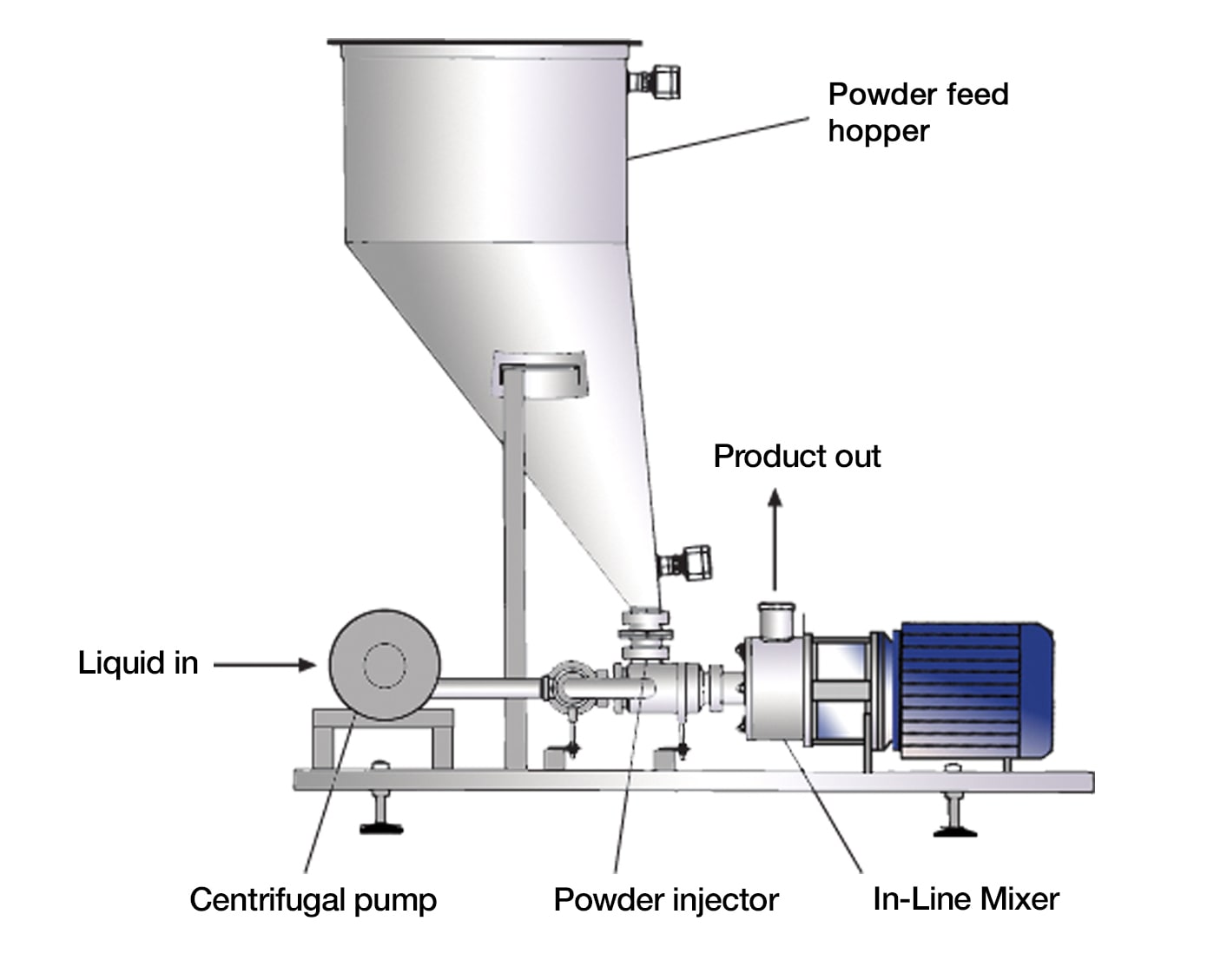Dispersion of Filter Aid Powders
Before racking into containers most beer, particularly lager, is filtered to remove yeast and other solid matter in suspension. This reduces the storage period required to naturally clarify the beer and improves the stability and shelf life. The most commonly used fitler aid (or filter media) is synthetic amorphous silica (silicon dioxide) generally referred to as kieselguhr, available under various trade names.

The Process
A suspension of powdered kieselguhr in water is prepared in a separate vessel before being introduced to the filter. The solids content can be varied according to the required dosage for the particular type of beer.
A typical manufacturing process for kieselguhr preparation using conventional agitators would be as follows:
- The vessel is charged with water.
- The agitator, positioned so as to create a vortex, is started.
- The powder is slowly added into the vortex.
- Mixing is continued to allow the powder to become fully dispersed and to maintain the solids in suspension.
The Problem
A number of problems can be encountered when using conventional agitators:
- Kieselguhr has an extremely low density and can create considerable dust emissions.
- The powder tends to float. Vigorous agitation is required to incorporate the powder into the water, which aggravates the dust problem and increases oxygenation.
- Powder addition rate must be carefully controlled to prevent lump formation.
- Agglomerates must be reduced to a fine particle size to create a stable suspension. The washing action of an agitator cannot achieve this.
- Long mixing times are required to complete dispersion/suspension.
The Solution
Processing times can be dramatically reduced and product quality improved by using a Silverson Flashblend. This operates as follows:

Stage 1:
Water is drawn from the vessel by the centrifugal pump and passes through the venturi assembly into the In-Line mixer. The high velocity flow through the venturi creates a vacuum in the chamber below the powder hopper. The water is returned to the vessel by the self-pumping In-Line mixer.
Stage 2:
The powder is fed into the specially designed hopper. Once the water is recirculating the powder feed valve is opened. The powder is drawn into the venturi, where the water and powder streams are instantly mixed and pass immediately to the inlet of the high shear In-Line mixer.
Stage 3:
The liquid and solids are subjected to intense high shear in the workhead of the In-Line mixer. When powder addition is complete the bypass valve is opened, switching the Flashblend to high speed recirculation mode. The entire contents of the vessel pass through the Flashblend in a short mixing cycle, ensuring hydration is rapidly completed.
The Advantages
The Flashblend offers a number of advantages over conventional systems:
- Greatly reduced processing times.
- Rapid incorporation of large volumes of powders.
- Improved consistency and repeatability.
- Controlled powder addition rate.
- Minimum operator input required.
- Minimized cleaning requirements - the Flashblend is designed to be Cleaned-In-Place (CIP).
- Designed to be easily automated and linked to process computers.
- Reduced dust emissions - the Flashblend can also be integrated with dust extraction systems.
- Powder incorporation systems can be custom built to suit individual customer requirements.
- Can be integrated with bulk powder dispensing systems e.g. Big Bags (FIBC’s).
- Optional hopper flow aids available for difficult powders.